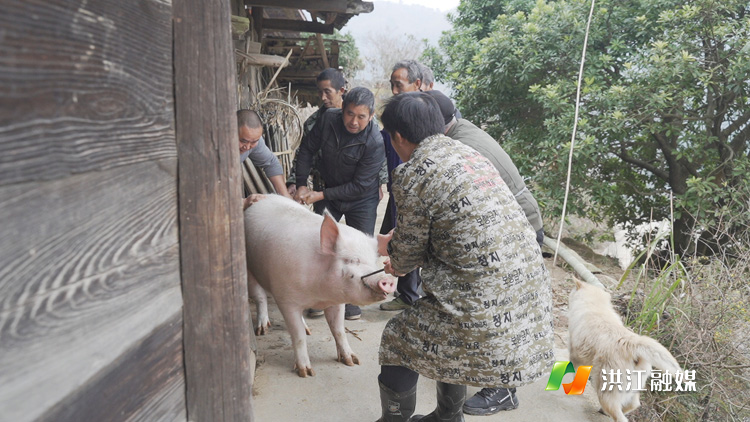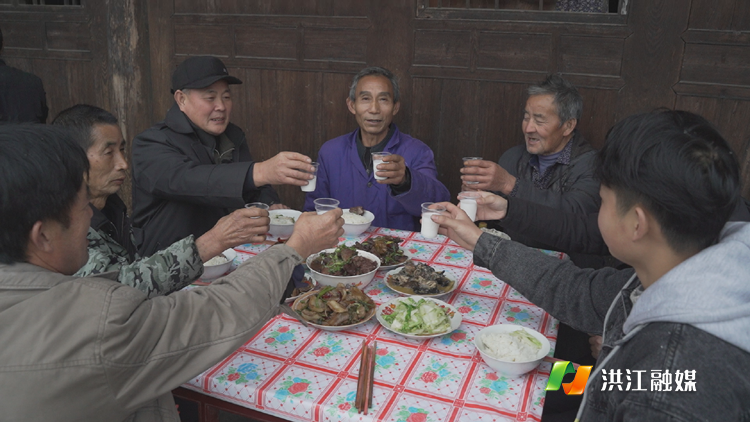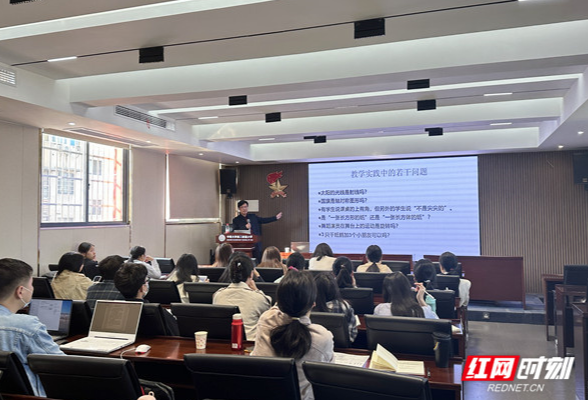As Spring Festival approaches, many families from Hongjiang start to make preparations for the new year feast. Many friends and relatives gather at home of Xiao’s family, and plan to slaughter a pig and make rice cakes. These activities are celebrations of the past year, and express a wish for prosperity in next year.
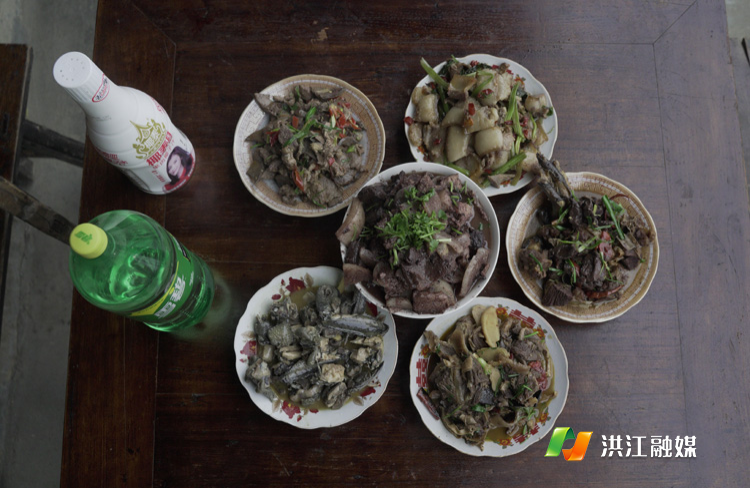
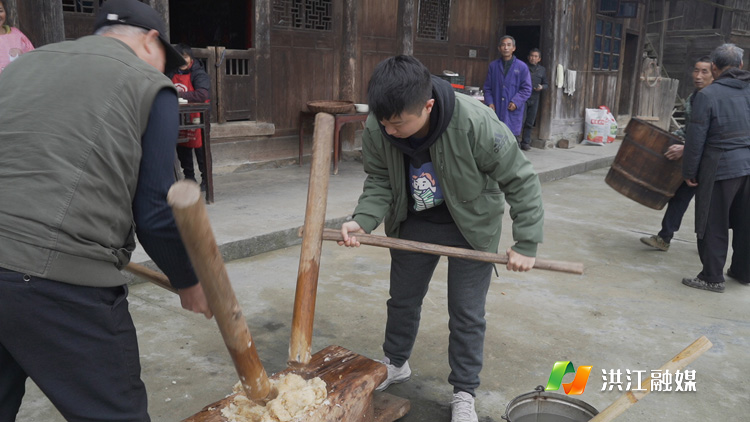
Rice cake is a must-have in the dinner table of Hongjian people during new year. Sticky rice needs to be putted into water first, and later a bamboo steamer for twenty minutes. Cooked rice will be putted into a stone trough, and it has to be smashed by a wooden tool. Pounding will turn it into a paste and increase its tenacity. Later, one needs to knead it into smaller pastes and put them on a table rubbed with oil. After pastes are pressed by a wooden board, rice cakes are made. In an addition, the locals has added Pseudognaphalium affine to rice cake, which is a species of daisy plant belonging to the genus Pseudognaphalium. This plant has been used traditionally in Traditional Chinese medicine and gives rice cakes a unique flavor. Baked rice cakes are crispy on surface and soft inside. One can dip them in sugar or fermented bean curd. Certainly, it is the taste of home.
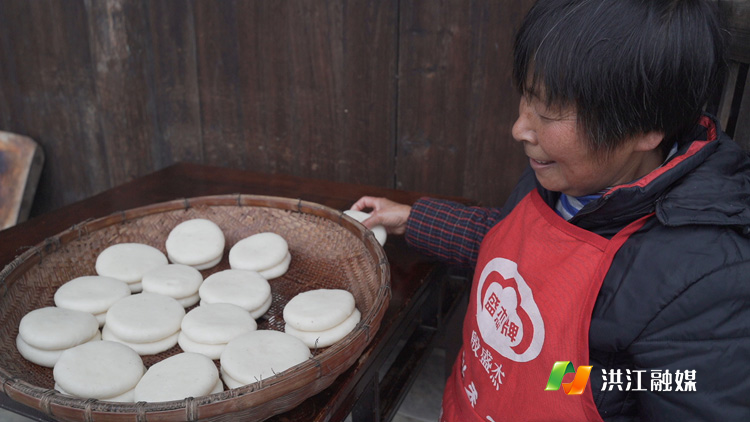

Slaughtering pig marks this special day. Usually, couple people have to work together in order to successfully slaughter a pig. Farmers can make cured meat, sausages and many other foods to preserve pork. Also, on this day Xiao’s family has made a pork feast to serve villagers. It is a form of social act connecting each other.
